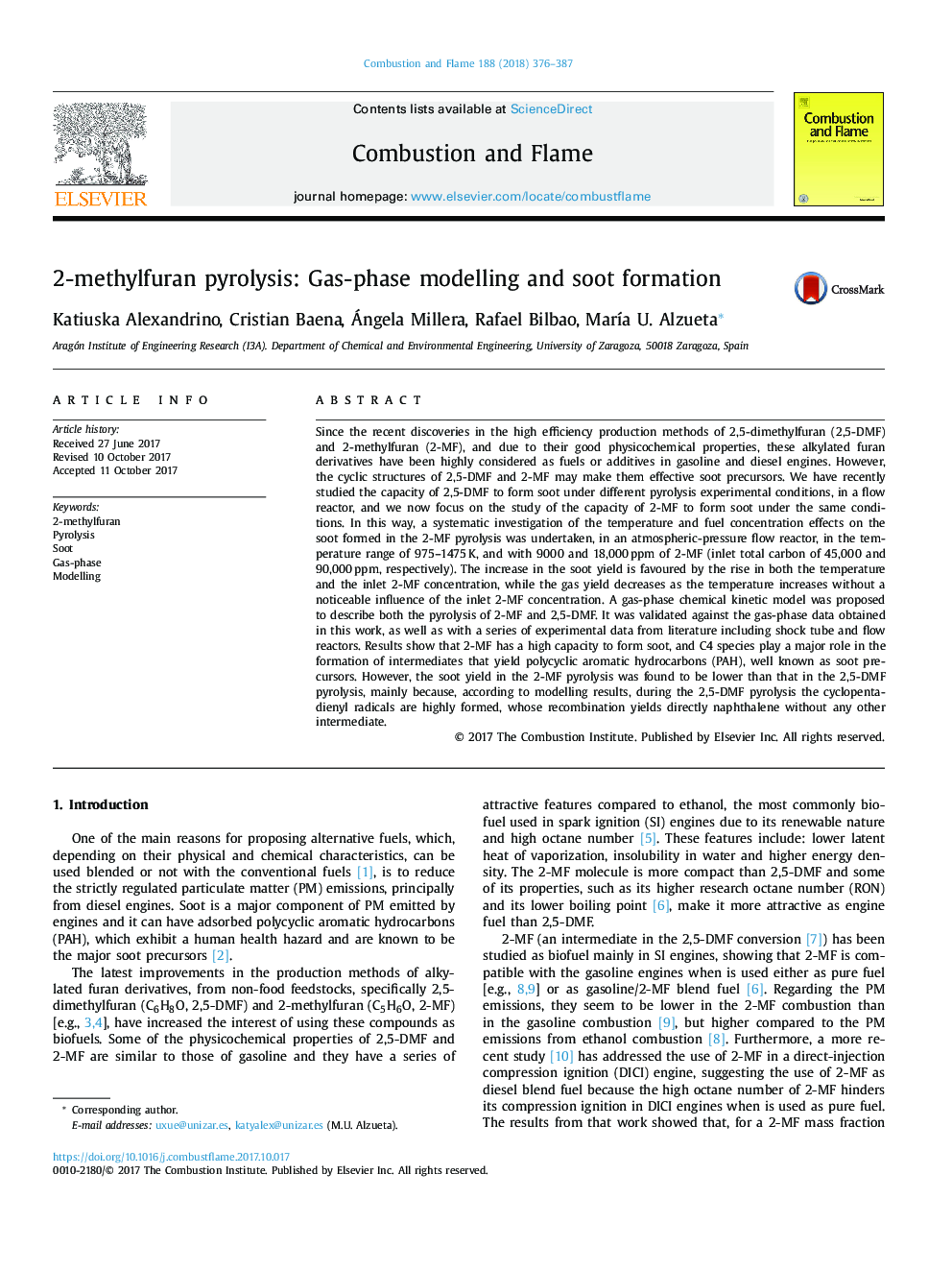| کد مقاله | کد نشریه | سال انتشار | مقاله انگلیسی | نسخه تمام متن |
|---|---|---|---|---|
| 6593969 | 1423549 | 2018 | 12 صفحه PDF | دانلود رایگان |
عنوان انگلیسی مقاله ISI
2-methylfuran pyrolysis: Gas-phase modelling and soot formation
دانلود مقاله + سفارش ترجمه
دانلود مقاله ISI انگلیسی
رایگان برای ایرانیان
کلمات کلیدی
موضوعات مرتبط
مهندسی و علوم پایه
مهندسی شیمی
مهندسی شیمی (عمومی)
پیش نمایش صفحه اول مقاله

چکیده انگلیسی
Since the recent discoveries in the high efficiency production methods of 2,5-dimethylfuran (2,5-DMF) and 2-methylfuran (2-MF), and due to their good physicochemical properties, these alkylated furan derivatives have been highly considered as fuels or additives in gasoline and diesel engines. However, the cyclic structures of 2,5-DMF and 2-MF may make them effective soot precursors. We have recently studied the capacity of 2,5-DMF to form soot under different pyrolysis experimental conditions, in a flow reactor, and we now focus on the study of the capacity of 2-MF to form soot under the same conditions. In this way, a systematic investigation of the temperature and fuel concentration effects on the soot formed in the 2-MF pyrolysis was undertaken, in an atmospheric-pressure flow reactor, in the temperature range of 975-1475â¯K, and with 9000 and 18,000â¯ppm of 2-MF (inlet total carbon of 45,000 and 90,000â¯ppm, respectively). The increase in the soot yield is favoured by the rise in both the temperature and the inlet 2-MF concentration, while the gas yield decreases as the temperature increases without a noticeable influence of the inlet 2-MF concentration. A gas-phase chemical kinetic model was proposed to describe both the pyrolysis of 2-MF and 2,5-DMF. It was validated against the gas-phase data obtained in this work, as well as with a series of experimental data from literature including shock tube and flow reactors. Results show that 2-MF has a high capacity to form soot, and C4 species play a major role in the formation of intermediates that yield polycyclic aromatic hydrocarbons (PAH), well known as soot precursors. However, the soot yield in the 2-MF pyrolysis was found to be lower than that in the 2,5-DMF pyrolysis, mainly because, according to modelling results, during the 2,5-DMF pyrolysis the cyclopentadienyl radicals are highly formed, whose recombination yields directly naphthalene without any other intermediate.
ناشر
Database: Elsevier - ScienceDirect (ساینس دایرکت)
Journal: Combustion and Flame - Volume 188, February 2018, Pages 376-387
Journal: Combustion and Flame - Volume 188, February 2018, Pages 376-387
نویسندگان
Katiuska Alexandrino, Cristian Baena, Ángela Millera, Rafael Bilbao, MarÃa U. Alzueta,